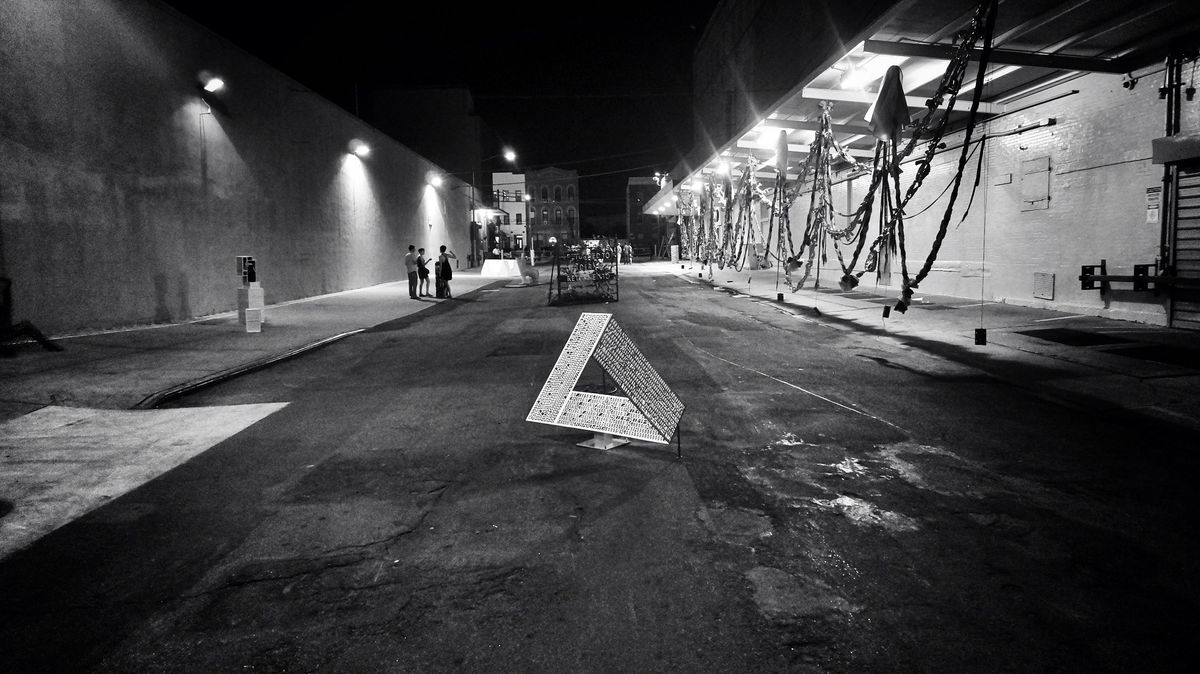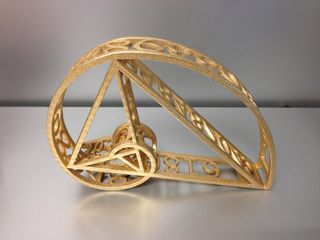3D Printers Make Art for Future Robots

NEW YORK — A sculpture of the golden ratio, a computer-coded painting of the "Mona Lisa" and a chair made out of hexadecimal codes are just some of the mathematically inspired art presented by one innovator this weekend at the World Maker Faire.
In her project, called "Reverse Abstraction," Brooklyn-based artist Ashley Zelinskie used 3D printing to create sculptures made of binary and hexadecimal codes, the series of digits that a computer uses to process information. The numbers may look like pure abstraction to the human mind, but they make up a computer's "language."

"Binary code is not abstract to a computer — it's how its brain works," Zelinskie said. "This is how it sees the world." Her sculptures are also forms that humans can grasp — cubes, triangles or a chair, for instance. The computer code they are made of appears as a sophisticated and delicate texture to the human eye. [See Photos of Zelinskie's 3D-Printed Sculptures]
"So, it's art that both a human and a computer can appreciate," Zelinskie said Sunday (Sept. 22) at a presentation here at the 2013 Maker Faire New York.
Zelinskie's first attempt to blur the line between how art is perceived by humans and by computerswas to create a chair, made of hexadecimal code, which, if read by a computer, would be the 3D rendering of a chair.
The chair was inspired by Joseph Kosuth's conceptual work in 1965, "One and Three Chairs," in which he questioned reality by including a chair, a picture of a chair and the definition of "chair," Zelinskie said. "What is the real chair?" was Kosuth's question, and the coded version of the chair was aimed to ask the same question — but in the 21st century, Zelinskie said.
Next pieces in the "Reverse Abstraction" series were cubes made of code that reads cubes, a golden 3D-printed representation of the golden ratio made up of the repetition of its mathematical equation, and a pi-shaped sculpture made of the mathematical constant up to hundreds of digits.
Sign up for the Live Science daily newsletter now
Get the world’s most fascinating discoveries delivered straight to your inbox.
Zelinskie also makes "paintings" that consist of a series of numbers. In her "Mona Lisa," she took an image of Leonardo da Vinci's masterpiece from Google Art Project and broke it down into its basic hexadecimal code. The code was then fit onto a canvas the same size as the original work of art.
"This work is not for us. It is for the future. And robots," Zelinskie said in her artist statement. "Each of these pieces takes for granted that computers will outlast their makers, that technology will supplant humanity and that craft should follow suit."
Email Bahar Gholipour. Follow LiveScience @livescience, Facebook & Google+. Original article on Live Science.
